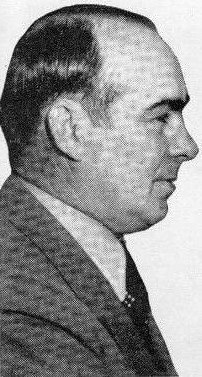
Joseph Raymond "Toots" Mondt was an American professional wrestler and promoter who revolutionized the wrestling industry in the early to mid-1920s and co-promoted the World Wide Wrestling Federation. Some of the stars Mondt helped create from the 1920s through the 1960s included Wayne Munn, Jim Londos, Antonino Rocca, Bruno Sammartino, Stu Hart and Cowboy Bill Watts.

Laverne Clarence "Verne" Gagne was an American amateur and professional wrestler, football player, wrestling trainer and wrestling promoter. He was the owner and promoter of the Minneapolis-based American Wrestling Association (AWA), the predominant promotion throughout the Midwest and Manitoba for many years. He remained in this position until 1991, when the company folded.
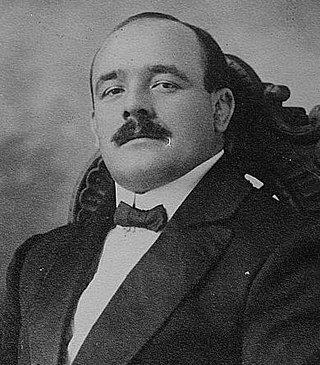
Stanisław Jan Cyganiewicz, better known by his ring name Stanislaus Zbyszko, and frequently referred to in the contemporary English-language press as Zbysco, was a Polish strongman and professional wrestler. He was a three-time World Heavyweight Champion in the United States during the 1920s. The surname Zbyszko was a nickname given to him by friends due to his bravery as a child. The name originates from a fictional medieval Polish knight in the historical novel The Knights of the Cross by Henryk Sienkiewicz, published in 1900. Stanislaus Zbyszko was the brother of Wladek Zbyszko (1891–1968).

Samuel Muchnick was an American professional wrestling promoter from St. Louis, Missouri. He is often regarded as wrestling's equivalent of Pete Rozelle, and he was instrumental in establishing the National Wrestling Alliance, which became the industry's top governing body, in 1948. Muchnick served as the NWA's president from 1950 to 1960 and again from 1963 to 1975. He operated the St. Louis Wrestling Club, one of the primary members of the NWA, based in St. Louis.

James Allen Crockett Sr. was an American professional wrestling promoter and professional sports franchise owner sometimes known as Jim Crockett Sr., or to people within the business simply as "Big Jim".

Robert Herman Julius Friedrich, better known by the ring name Ed "Strangler" Lewis, was an American professional wrestler and trainer. During his wrestling career, which spanned four decades, Lewis was a four-time World Heavyweight Wrestling Champion and overall recognized officially as a five-time world champion. Considered to be one of the most iconic and recognizable sports stars of the 1920s, often alongside boxer Jack Dempsey and baseball player Babe Ruth, Lewis notably wrestled in over 6,000 matches and lost only 32 of them.
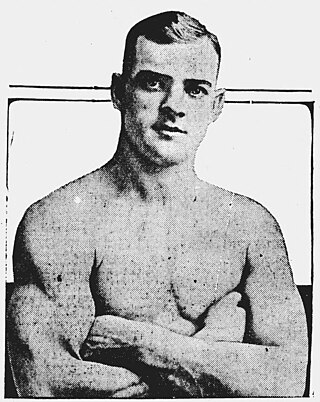
Earl Caddock was an American professional wrestler and World Heavyweight Champion who was active in the early portion of the twentieth century. As the first man to bill himself as "The Man of 1,000 Holds", Caddock was one of professional wrestling's biggest stars between the years of 1915 and 1922.
Walter Joseph Karbo was an American professional wrestling promoter and co-founder of the American Wrestling Association with Verne Gagne.
Władysław Cyganiewicz, better known by the ring name Władek Zbyszko, was a Polish catch wrestler, professional wrestler and strongman. "Zbyszko" was his older brother Stanislaus's childhood nickname, borrowed from a fictional medieval knight in the novel Krzyżacy; both brothers used it as their ring name.

Paul Forbes Bowser was a professional wrestling promoter who was active from the 1920s to the 1950s in the Boston area.
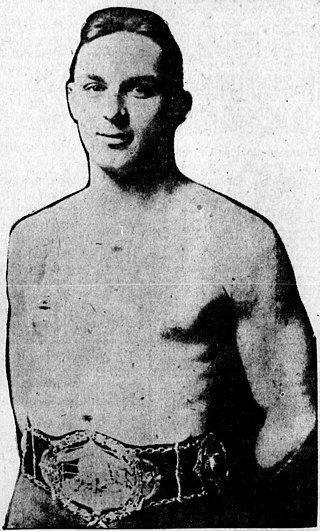
Joe Stecher, sometimes spelled Joe Stetcher, was an American professional wrestler and three-time World Heavyweight Wrestling Champion. Known for his ferocity, tremendous leg strength and extensive knowledge of the sport, Stecher is considered to be one of the greatest wrestlers of all time. In 2000, Stecher was inducted into the George Tragos/Lou Thesz Professional Wrestling Hall of Fame.

John Pesek was an American professional wrestler and greyhound racing dog breeder. Nicknamed 'The Nebraska Tiger Man' for his ferocity, aggression and catlike dexterity, Olympic freestyle wrestling gold medallists Robin Reed and Russell Vis both regarded Pesek as the greatest wrestler they ever met. He was a one-time National Wrestling Association World Heavyweight Champion.
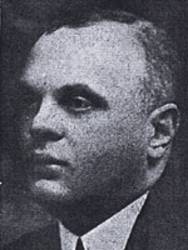
Jack Curley, born Jacques Armand Schuel, was a sports promoter of the early 1900s. He managed several high-profile boxing events around the turn-of-the-century and he also established professional wrestling as a viable business in the big city, and he eventually built the New York City office into an industry power while negotiating an agreement between the nation's most powerful regional territories.
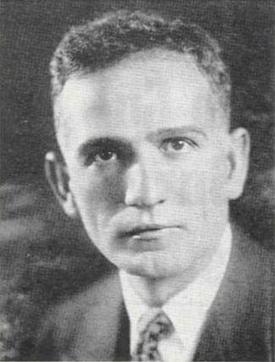
Thomas Nicholas Packs was a Greek-American professional wrestling promoter. He was one of the top promoters over the first half of the 20th century and was responsible for building one of the nation's most prestigious wrestling territories in St. Louis.

Máximino Linares Moreno was a Mexican luchador and lucha film star, better known under the ring name Rayo de Jalisco. He is considered to be one of the best wrestlers of his generation. Linares' son followed in his footsteps and is working under the name Rayo de Jalisco Jr., wearing the same distinctive black mask with silver lightning bolt on it when wrestling. One of Linares' grandsons is also a wrestler, known as "Rayman".
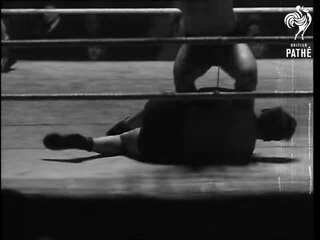
The Dusek family was a professional wrestling family. Its real surname was Hason. It started with four brothers, Ernie, Emil, Joe and Rudy, often billed as the Dusek Riot Squad and well known in the Omaha, Nebraska territory.

Rinaldo Leonard Rositani, known professionally as Len Rossi, was an American professional wrestler who competed throughout the National Wrestling Alliance from 1958–1972. A 14-time NWA World Tag Team Champion and one of the most popular stars in the history of NWA Mid-America, Rossi was also a member of both the NWA Hall of Fame and the Professional Wrestling Hall of Fame.

Paul "Pinkie" George was an American professional wrestling promoter, boxer and businessman best known as the visionary behind, and first president of, the National Wrestling Alliance. He operated the NWA's Iowa territory, one of the primary members of the NWA based in Des Moines. Described by Sam Muchnick as the father of the NWA George was inducted into the NWA Hall of Fame in 2014.
Albert C. Haft was a wrestler, wrestling and boxing promoter and wrestling trainer who was a prominent promoter in the United States from the late 1910s until the 1960s, running his operations primarily from Columbus, Ohio. He founded the Midwest Wrestling Alliance and was one of the founding members of the National Wrestling Alliance in 1948.
The Sharpe Brothers was a Canadian professional wrestling tag team consisting of brothers Ben Sharpe and Mike Sharpe, best known for their tenures wrestling in the territories of Northern California and Japan. Both men were tall in stature with athletic backgrounds and served in the Royal Air Force during World War II. While both were stationed in England, they discovered professional wrestling and set about entering the profession soon thereafter. In pursuit, they travelled to San Francisco after the war and rose to prominence in promoter Joe Malcewicz's territory as both singles and tag team wrestlers.
